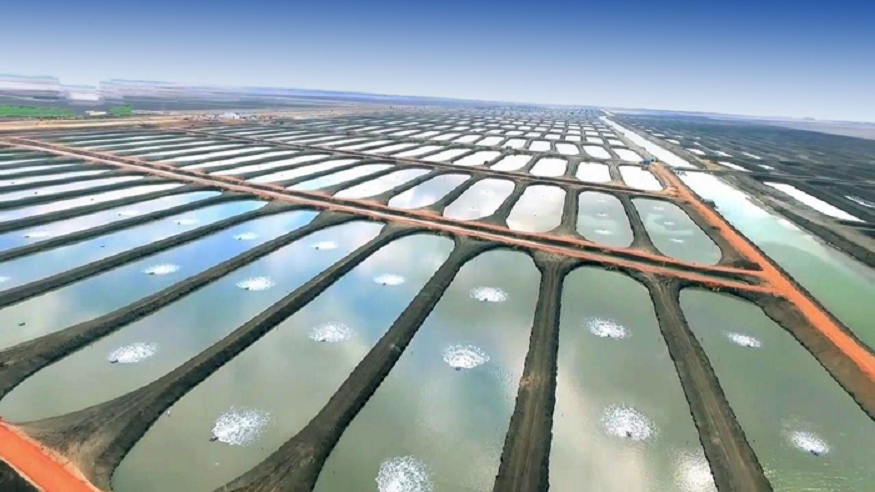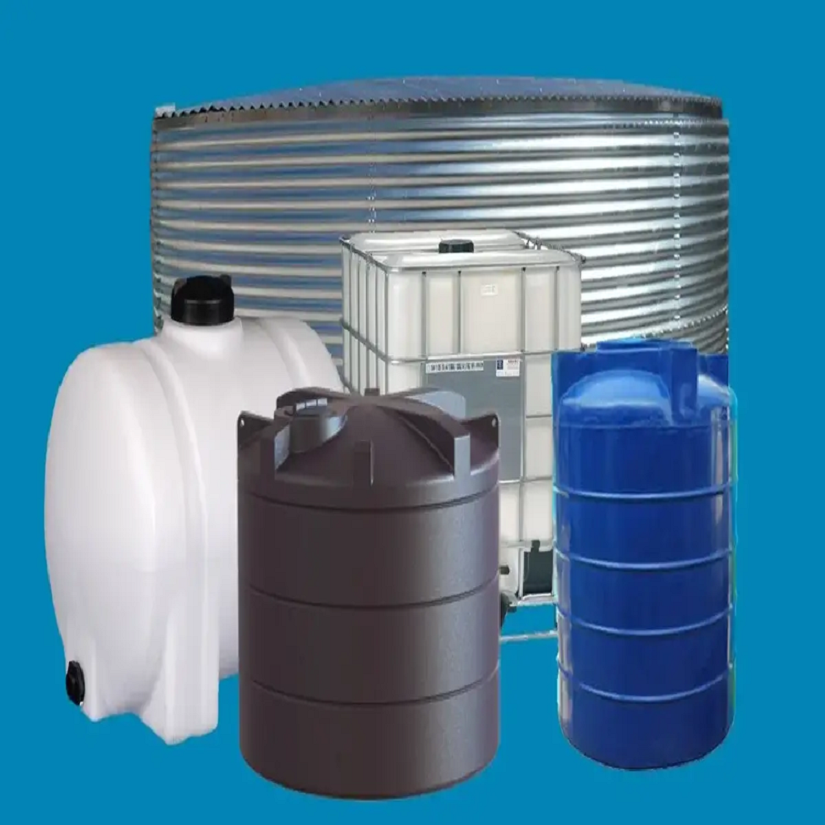
The use of treated wastewater in fish farming
Fish farming is one of the profitable projects that receive the Kingdom’s attention. The National Program for the Development of the Fisheries Sector in the Kingdom, which was approved by the Council of Ministers by Resolution No. (514), and supervised by the Ministry of Environment, Water and Agriculture; A comprehensive national strategy to develop the fisheries sector and enhance its sustainable economic and development role.
The program aims to achieve optimal use of the Kingdom’s natural resources in the field of fisheries, support the aquaculture sector to increase its contribution to the gross national product, achieve self-sufficiency and cover the Kingdom’s needs of seafood, in addition to diversifying sources of income and supporting the economy in the Kingdom.
Sewage
Waste-carrying water from housing, commercial and government buildings, institutions and factories.
Disposal of sewage
It is prohibited to dispose of sewage water in wells, seas, rocky outcrops of aquifers, irrigation channels, agricultural drains, waterways, or dams.
Use of treated wastewater for fish farming
A license must be obtained from the Ministry of Agriculture to use treated wastewater for fish farming.
General requirements
The entity operating the sewage treatment plants shall conduct periodic analyzes and checks in laboratories accredited by the Ministry of Water and Electricity to ensure the quality and quality of the produced water and its compliance with the specifications as shown below:
- Bio-oxygen content (BOD5): twice weekly.
- Chemical oxygen content (COD): twice a week.
- Suspended solids (TSS): twice a week.
- Total dissolved substances (TDS): twice a week.
- Acidity (pH): twice a week.
- Ammonia (NH3-N): once a week.
- Nitrates (NO3): once a week.
- Faecal coliform: (FC) twice a week.
- Intestinal worms eggs: once a week.
- Heavy metals mentioned in tables No. (2) and (3): once every six months.
- Take into account the repetition of analyzes when necessary.
The basic ingredients that must be available in the water of fish farms
Water is one of the basic ingredients in the fish farming process, provided that it meets the following conditions:
- Available permanently and without interruption.
- Pollutant free.
- Free of pathogens.
- Low costs and its sources are either seawater, rivers, well water, or treated sewage water.
Well water is considered the most important water resource for fish farming operations. It depends on the farms established in agricultural holdings, in which water is used in an open system, where water is pumped to the fish ponds first, and then to the plant production farm.
Conditions that must be met in drilling wells for use in fish farming
- The well shall be so deep that the water is pumped free of pollutants.
- Analysis of a sample of well water to determine its suitability.
- Ensure their quality and are free from toxic compounds before using them in the fish farming process.
Characteristics of the culture of water
The permissible concentration of some elements in fish culture water (mg/L)
- Oxygen gas 5 or more.
- Ammonia 0.05
- Carbon dioxide 10 or less.
- Mercury zero.
- DDT is zero.
- The properties of water required to be available in fish farms, can be divided into two parts:
Physical properties of water
Temperature
Fish and crustaceans are directly affected by the temperature of the environment because fish and crustaceans are cold-blooded creatures, that is, they acquire the temperature of the aquatic environment. Feeding rates as well as growth are directly related to temperature, as its effect on living aquatic organisms is due to its effect on the enzymatic activity responsible for stimulating most of the vital reactions such as metabolism. Temperature also affects a number of vital factors, the most important of which is dissolved oxygen.
Each type of fish has an optimum temperature, so the thermal environment of the farmed fish must be known so that the fish do not have what is known as heat shock, which occurs as a result of the transfer of fish from one temperature to another, more or less than a lot, when the fish move from an aquatic environment to another environment that differs from it Thermal shock of about 9 degrees will cause immediate death as a result of thermal shock. Therefore, it is preferable that the fish be transported at a low temperature (in the early morning) to avoid what may occur from the frequent contact of the fish, which results in wounds that give bacteria the opportunity to activate at high temperatures, causing a pathological infection.
The light
Light is an essential element in the process of photosynthesis of plant organisms (phytoplankton) in ponds. It is necessary to measure the intensity of illumination and follow the growth of phytoplankton because of its importance as food for fish, noting that the large number of plankton may lead to the formation of a dense layer on the surface, which leads to the lack of light To the benthic plant organisms, these benthic plants consume oxygen during their continuous reproduction, and thus fish compete for oxygen, which leads to the death of these benthic plant organisms, and the ammonia percentage increases accordingly. The light is measured with a Luxmeter.
Electrical Conductivity
It is the ability of water to conduct an electric current, and the change of ions in water causes a change in the conductivity of water. In general, measuring the degree of electrical conductivity is an indicator similar to measuring the degree of salinity, and therefore if the value of electrical conductivity is clearly higher than the value of salinity, this means that there are some ions that carry charges, which indicate the presence of an abnormal condition in the water, which is often pollution. Therefore, electrical conductivity must be constantly measured as an indication of the extent of contamination present in the water. Electrical conductivity is measured by a conductivity device.
Turbidity
They are of two types: the type of output particles or particles of soil suspended in the water, which have a direct effect on fish but affect the permeability of light to the water, limiting the photosynthesis process of plant organisms, which affects the amount of oxygen in the water and an increase in carbon dioxide. Specific, and this limit can be estimated by The transparency disc and the other type are produced by the phytoplankton present in the water but are harmless to the fish to Secchi disc.
In the event that the reading is between 20 to 45 cm, this means that there is an appropriate rate of phytoplankton, and if the reading is more than 50 cm, this means that the water is poor in phytoplankton and needs to increase the ratio. But if the disc reading is less than 20 cm, this means that the rate of phytoplankton is very large and becomes a danger to fish and the water must be changed to another.
Light and turbidity
Turbidity is a measure of the amount of suspended matter in the water, which may result from various reasons. It may be caused by rain and floods, including particles of mineral elements, and may result from the secretions and activity of fish during the breeding seasons, where fish chase each other, or as a result of competition for prey, which leads to To flip the contents of the bottom and muddy the water, which in turn is reflected on the arrival of light to the micro-organisms (phytoplankton), and this leads to a reduction in the proportions of the element of oxygen necessary for these plants to carry out the photosynthesis process, and this affects the growth rate of fish and may result in the spread of diseases innate;
It is known that not all of the light falling on the surface of the water passes through, as part of it is reflected, and this quantity depends on the angle of incidence and the nature of the water surface. The level of turbidity and turbidity as previously mentioned limits the penetration of light, and thus the rate of photosynthesis and the production of plankton decreases, which makes it difficult for fish to obtain food, and this factor pushes them to the process of predation, as it has a mechanical effect that causes wounding of the gills, and it is worth mentioning to The degree of turbidity required in ponds with clay soil is in the range of 200 parts per million.
watercolor
Where the green color indicates an increase in phytoplankton and other types of algae.
The bluish color on some types of algae.
Brown color indicates an increase in the proportion of humus.
Greenish-brown color indicates the mixture of humic substances and phytoplankton.
water temperature
Fish growth rates are at the optimum temperature in which their growth rates are maximum. If the fish is found at a lower or higher temperature, it does not grow normally. Heat plays an influential role in the vital processes carried out by fish such as metabolism, reproduction, and especially the process of ovulation. Fish live in a certain range of temperatures, depending on their species. And also the stages of growth in which they exist. Fish are divided according to their tolerance of water temperature into cold water fish. They mate at a temperature of 15°C or less. And warm water fish and they mate at temperatures above 16°C. For example, tilapia fish need to live in a range of temperatures ranging from 22-25 degrees Celsius. It stops feeding if the temperature drops to 16°C, and at 10°C it becomes vulnerable to death, while tilapia hatcheries need between 28-30°C.
The high temperature stimulates the dissolution of chemicals in the water, which negatively affects the vitality of the fish. On the contrary, the rate of solubility of oxygen in water decreases. An attempt can be made to reduce temperature fluctuations by increasing the water level in the tank so that the fish can go to the bottom in the event of a difference in temperature at the surface.
Chemical properties that must be available in treated water for fish farming
The water environment is considered one of the most important factors determining the establishment of any fish farm, where the available water in terms of quantity and quality affects the success or failure of the production process. Diseases and fish mortality.
Learn more about the wastewater treatment plant with Carewater from this link.

























